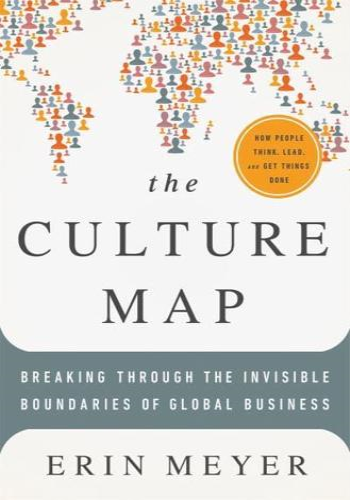Chapter 1: Introduction
The Culture Map introduces the concept of cultural intelligence (CQ), defined as the ability to navigate and thrive in different cultures. The author, Erin Meyer, emphasizes the importance of understanding cultural differences to build effective relationships and achieve success in a globalized world.
Example: A multinational team working on a project might experience misunderstandings and conflicts if they come from different cultural backgrounds. For instance, a team member from a high-context culture might prefer implicit communication, while a member from a low-context culture might expect explicit instructions.
Chapter 2: The Eight Scales of Cultural Difference
The book presents eight scales to measure cultural differences:
* Communicating: How people express themselves and interpret messages
* Evaluating: How people give and receive feedback
* Persuading: How people influence others
* Leading: How people exercise authority and make decisions
* Deciding: How people reach consensus and make choices
* Trusting: How people build and maintain relationships
* Disagreeing: How people express disagreement and resolve conflicts
* Scheduling: How people perceive time and manage their schedules
Example: A manager from a culture that values assertiveness might criticize their team directly, while a manager from a culture that values harmony might avoid direct confrontation.
Chapter 3: Cultural Polarizations
The author identifies two cultural "polarizations" that divide the world's cultures:
* Linear-Activist vs. Multi-Active: Linear-activists prefer structured, sequential approaches, while multi-actives prioritize flexibility and multitasking.
* Individualist vs. Collectivist: Individualists emphasize personal goals, while collectivists prioritize group harmony and loyalty.
Example: In a linear-activist culture, people may focus on completing tasks on time, while in a multi-active culture, they might prioritize social relationships and flexibility.
Chapter 4: Culture and Communication
The book explores how cultural differences affect communication styles, including:
* High-Context vs. Low-Context: High-context cultures rely on implied meanings and non-verbal cues, while low-context cultures prefer explicit and direct language.
* Expressive vs. Reserved: Expressive cultures encourage emotional expression, while reserved cultures value emotional restraint.
Example: In a high-context culture, a person might assume that their colleague understands their unspoken expectations, while in a low-context culture, they would need to be more explicit.
Chapter 5: Culture and Evaluation
The book discusses how cultural differences influence how people give and receive feedback:
* Positive Feedback: Some cultures value positive feedback, while others may view it as insincere.
* Negative Feedback: In direct feedback cultures, people provide negative feedback directly, while in indirect feedback cultures, they may hint at it or avoid it altogether.
Example: A manager from a direct feedback culture might criticize an employee's performance in a specific and constructive way, while a manager from an indirect feedback culture might provide feedback more subtly or in private.
Chapter 6: Culture and Persuasion
The book describes how cultural differences shape persuasion techniques:
* Informational vs. Emotional: Informational cultures value facts and data, while emotional cultures emphasize feelings and relationships.
* Explicit vs. Implicit: Explicit persuasion involves stating arguments clearly, while implicit persuasion relies on indirect cues and暗示.
Example: In an informational culture, a salesperson might focus on providing detailed specifications of their product, while in an emotional culture, they might emphasize how the product will make the customer feel.






